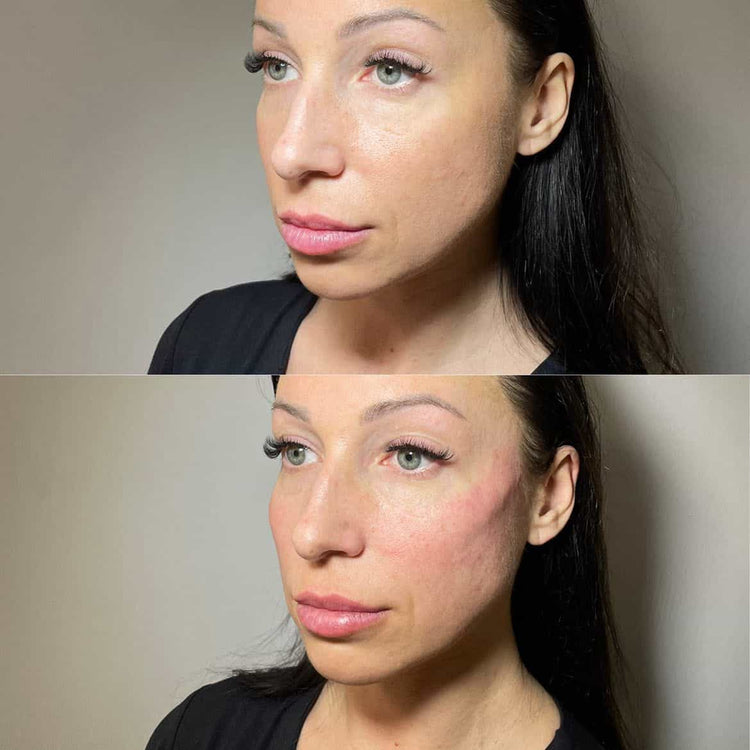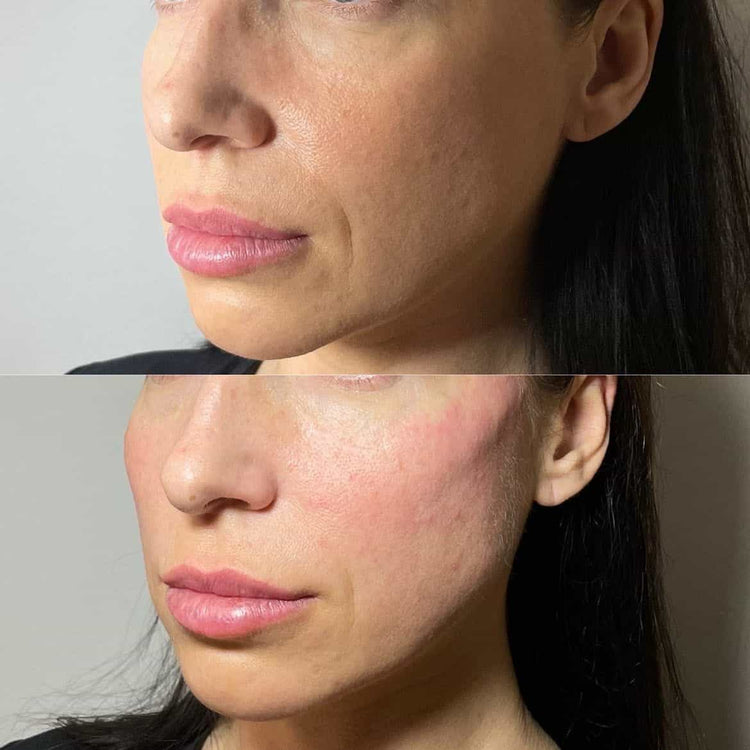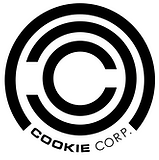Understanding Gaunt Facies
Gaunt facies, characterized by a hollow appearance in the cheeks, can impact facial aesthetics and self-confidence. Understanding the underlying causes and available treatment options is crucial for individuals seeking to address this concern. In the United Kingdom, there are various cheek augmentation techniques, each with its own benefits and considerations.
Defining Gaunt Facies
Gaunt facies is a term used to describe a facial appearance characterized by hollow or sunken cheeks. This can create an aged or gaunt look, leading to concerns about self-esteem and aesthetic appearance. The causes of gaunt facies can vary, including age-related fat loss, genetics, weight loss, or underlying medical conditions.
Causes of Gaunt Facies
Age-related fat loss is a common cause of gaunt facies. As we age, our bodies naturally lose subcutaneous fat, which contributes to the fullness of our cheeks. This can lead to a more hollow appearance, particularly in the midface region. Genetics also play a role, with some individuals predisposed to thinner facial features.
Significant weight loss can contribute to gaunt facies. When losing substantial amounts of weight, the body sheds fat stores throughout, including those in the face. This can result in noticeable hollowness in the cheeks. Medical conditions like malnutrition, hormonal imbalances, or certain diseases can also lead to facial wasting and a gaunt appearance.
Assessing Your Needs
To effectively address gaunt facies, it is essential to first assess your individual needs and goals. Consider factors such as the severity of cheek hollowness, desired outcome, lifestyle, and budget. Understanding your preferences and concerns will help guide you towards the most suitable cheek augmentation treatment option available in the UK.
Individual Facial Structure Analysis
A thorough assessment of your facial structure is crucial for determining the most appropriate cheek augmentation technique. This involves analyzing the severity of cheek hollowness, identifying any asymmetries, and considering the overall proportions of your face. Factors like the shape of your jawline, nose, and forehead also play a role in achieving harmonious facial balance.
Examining the underlying causes of gaunt facies can provide valuable insights for treatment planning. If age-related fat loss is the primary concern, procedures that restore volume using dermal fillers or fat grafting might be suitable. For cases related to weight loss or genetics, cheek implants may offer a more permanent solution.
It’s essential to consult with a qualified and experienced practitioner who specializes in facial aesthetics. They will assess your individual needs, discuss various treatment options, and recommend the most appropriate approach based on your desired outcome and facial characteristics.
Desired Aesthetic Outcome
Determining the desired aesthetic outcome is a crucial step in choosing the right cheek augmentation treatment. Visualize how you want your cheeks to appear – fuller, more symmetrical, or simply subtly enhanced. Consider the overall balance of your face and whether you prefer a natural look or a more dramatic transformation.
Think about your lifestyle and how it might influence your decision. Some treatments, like dermal fillers, require repeat sessions to maintain results, while others, such as cheek implants, offer a more permanent solution. Factor in your budget and the costs associated with each treatment option.
Treatment Options in the UK
The pursuit of enhanced facial aesthetics has led many individuals in the UK to explore cheek augmentation options for addressing gaunt facies. Understanding the diverse range of treatments available is essential for making an informed decision that aligns with individual needs and preferences.
Choosing the Right Practitioner
Choosing the right cheek augmentation treatment for gaunt faces requires careful consideration of various factors.
Qualifications and Experience
When selecting a practitioner for cheek augmentation, qualifications and experience are paramount. Look for a medical professional who is board-certified in a relevant specialty, such as plastic surgery or facial aesthetics.
Experience is equally important. Inquire about the practitioner’s experience performing cheek augmentation procedures specifically, and review before-and-after photos to assess their aesthetic sense and technical skill.
Furthermore, ensure that the practitioner practices in a reputable clinic or hospital that adheres to strict sterilization and safety protocols.
Consultation Process and Communication Style
Choosing the right cheek augmentation treatment for gaunt faces requires careful consideration of various factors. When selecting a practitioner for cheek augmentation, qualifications and experience are paramount. Look for a medical professional who is board-certified in a relevant specialty, such as plastic surgery or facial aesthetics.

- Experience is equally important. Inquire about the practitioner’s experience performing cheek augmentation procedures specifically, and review before-and-after photos to assess their aesthetic sense and technical skill.
- Furthermore, ensure that the practitioner practices in a reputable clinic or hospital that adheres to strict sterilization and safety protocols.
The consultation process is an opportunity to discuss your goals, concerns, and expectations with the practitioner. Be prepared to provide detailed information about your medical history, any medications you are taking, and previous cosmetic procedures.
- During the consultation, ask questions about the different cheek augmentation techniques available, their potential risks and benefits, and expected recovery time.
- Discuss your desired aesthetic outcome and ensure that the practitioner understands your vision.
- It’s important to feel comfortable and confident in the practitioner’s expertise and communication style.

Effective communication is crucial throughout the treatment process. Maintain open dialogue with your practitioner, expressing any concerns or questions you may have. Be honest about your expectations and any potential limitations regarding lifestyle adjustments during recovery.
Post-Treatment Care and Expectations
Choosing the right cheek augmentation technique involves several factors to ensure optimal results and patient satisfaction.
Aftercare Instructions
Aftercare instructions will vary depending on the specific cheek augmentation procedure chosen. However, some general guidelines apply to most treatments:
It’s crucial to follow your practitioner’s post-operative instructions meticulously. These may include recommendations for medications, wound care, and activity restrictions.
You will likely experience some swelling, bruising, and discomfort after the procedure. These are normal reactions and typically subside within a few days to weeks.
Apply cold compresses or ice packs to minimize swelling. Elevation of your head while sleeping can also help reduce fluid buildup.
Avoid strenuous activities, heavy lifting, and excessive sun exposure for several weeks following the treatment.
Continue using any prescribed medications as directed by your practitioner.
Attend all follow-up appointments to monitor healing and address any concerns.
It’s important to be patient, as full results from cheek augmentation may take several months to appear.
During the initial healing phase, avoid touching or rubbing the treated area to prevent irritation or infection.
Maintain a healthy diet and stay hydrated to support tissue healing.
If you experience any unusual symptoms, such as fever, excessive bleeding, or severe pain, contact your practitioner immediately.
Expected Results and Realistic Timeframes
Post-treatment care is essential for optimal results and recovery from cheek augmentation procedures. Following your practitioner’s instructions carefully is crucial. You may experience swelling, bruising, and discomfort initially, which are normal reactions that typically subside within a few weeks.
During the healing phase, avoid touching or rubbing the treated area to prevent irritation or infection. Maintain a healthy diet and stay hydrated to support tissue healing. Continue using any prescribed medications as directed by your practitioner and attend all follow-up appointments.
The expected results of cheek augmentation vary depending on the technique used and individual factors. Dermal fillers typically provide temporary enhancement, lasting several months to a year, while cheek implants offer a more permanent solution. Full results may take several months to appear as swelling subsides and tissues settle.
Realistic timeframes for recovery vary based on the treatment chosen and individual healing rates. Dermal filler procedures generally involve minimal downtime, with most patients returning to normal activities within a few days. Cheek implants may require a slightly longer recovery period, ranging from two to three weeks. It’s important to follow your practitioner’s instructions regarding activity restrictions and return to work or exercise.
Potential Complications and Risks
Choosing the right cheek augmentation treatment for gaunt faces requires careful consideration of various factors. When selecting a practitioner for cheek augmentation, qualifications and experience are paramount. Look for a medical professional who is board-certified in a relevant specialty, such as plastic surgery or facial aesthetics.
- Experience is equally important. Inquire about the practitioner’s experience performing cheek augmentation procedures specifically, and review before-and-after photos to assess their aesthetic sense and technical skill.
- Furthermore, ensure that the practitioner practices in a reputable clinic or hospital that adheres to strict sterilization and safety protocols.
The consultation process is an opportunity to discuss your goals, concerns, and expectations with the practitioner. Be prepared to provide detailed information about your medical history, any medications you are taking, and previous cosmetic procedures.
- During the consultation, ask questions about the different cheek augmentation techniques available, their potential risks and benefits, and expected recovery time.
- Discuss your desired aesthetic outcome and ensure that the practitioner understands your vision.
- It’s important to feel comfortable and confident in the practitioner’s expertise and communication style.
Effective communication is crucial throughout the treatment process. Maintain open dialogue with your practitioner, expressing any concerns or questions you may have. Be honest about your expectations and any potential limitations regarding lifestyle adjustments during recovery.
Choosing the right cheek augmentation technique involves several factors to ensure optimal results and patient satisfaction.
Potential complications and risks associated with cheek augmentation procedures should be discussed thoroughly with your practitioner during the consultation. These can vary depending on the chosen technique but may include:
- Infection
- Swelling
- Bruising
- Bleeding
- Asymmetry
- Nerve damage
- Allergic reactions to anesthesia or fillers.
It’s crucial to select a qualified and experienced practitioner who follows strict sterile procedures to minimize the risk of complications. Open communication with your practitioner throughout the process is essential for addressing any concerns and ensuring a safe and successful outcome.
Aftercare instructions will vary depending on the specific cheek augmentation procedure chosen. However, some general guidelines apply to most treatments:
It’s crucial to follow your practitioner’s post-operative instructions meticulously. These may include recommendations for medications, wound care, and activity restrictions.
You will likely experience some swelling, bruising, and discomfort after the procedure. These are normal reactions and typically subside within a few days to weeks.
Apply cold compresses or ice packs to minimize swelling. Elevation of your head while sleeping can also help reduce fluid buildup.

Avoid strenuous activities, heavy lifting, and excessive sun exposure for several weeks following the treatment.
Continue using any prescribed medications as directed by your practitioner.
Attend all follow-up appointments to monitor healing and address any concerns.
It’s important to be patient, as full results from cheek augmentation may take several months to appear.
During the initial healing phase, avoid touching or rubbing the treated area to prevent irritation or infection.
Maintain a healthy diet and stay hydrated to support tissue healing.
If you experience any unusual symptoms, such as fever, excessive bleeding, or severe pain, contact your practitioner immediately.
Post-treatment care is essential for optimal results and recovery from cheek augmentation procedures. Following your practitioner’s instructions carefully is crucial. You may experience swelling, bruising, and discomfort initially, which are normal reactions that typically subside within a few weeks.
During the healing phase, avoid touching or rubbing the treated area to prevent irritation or infection. Maintain a healthy diet and stay hydrated to support tissue healing. Continue using any prescribed medications as directed by your practitioner and attend all follow-up appointments.
The expected results of cheek augmentation vary depending on the technique used and individual factors. Dermal fillers typically provide temporary enhancement, lasting several months to a year, while cheek implants offer a more permanent solution. Full results may take several months to appear as swelling subsides and tissues settle.
Realistic timeframes for recovery vary based on the treatment chosen and individual healing rates. Dermal filler procedures generally involve minimal downtime, with most patients returning to normal activities within a few days. Cheek implants may require a slightly longer recovery period, ranging from two to three weeks. It’s important to follow your practitioner’s instructions regarding activity restrictions and return to work or exercise.
Maintaining Results
Choosing the right cheek augmentation technique for gaunt faces involves careful consideration of several factors to ensure optimal results and patient satisfaction. Understanding the available options, potential risks, recovery process, and desired outcomes is crucial.
Long-Term Maintenance Procedures
Long-term maintenance of cheek augmentation results depends on the chosen procedure.
Dermal fillers typically require repeat treatments every few months to a year to maintain volume as the filler is gradually absorbed by the body. Cheek implants, on the other hand, offer a more permanent solution, but regular touch-ups may be needed over time to address any changes in facial structure or volume loss due to aging.
Sun protection is crucial for both types of augmentation. UV rays can damage the skin and break down collagen, leading to premature aging and potentially affecting the appearance of the treated area.
Maintaining a healthy lifestyle with proper nutrition and hydration supports overall skin health and can contribute to long-lasting results. Avoiding smoking and excessive alcohol consumption also helps preserve collagen production and minimize tissue breakdown.
Lifestyle Factors Influencing Facial Volume
Long-term maintenance of cheek augmentation results depends on the chosen procedure. Dermal fillers typically require repeat treatments every few months to a year to maintain volume as the filler is gradually absorbed by the body. Cheek implants, on the other hand, offer a more permanent solution, but regular touch-ups may be needed over time to address any changes in facial structure or volume loss due to aging.
Sun protection is crucial for both types of augmentation. UV rays can damage the skin and break down collagen, leading to premature aging and potentially affecting the appearance of the treated area.
Maintaining a healthy lifestyle with proper nutrition and hydration supports overall skin health and can contribute to long-lasting results. Avoiding smoking and excessive alcohol consumption also helps preserve collagen production and minimize tissue breakdown.
- Redensity 1 Skin Booster Treatments Near Holmbury St Mary, Surrey - November 3, 2025
- Radiesse Liquid Facelift Near Reigate, Surrey - November 1, 2025
- Profhilo Treatment Near New Malden And Coombe, Surrey - October 30, 2025
